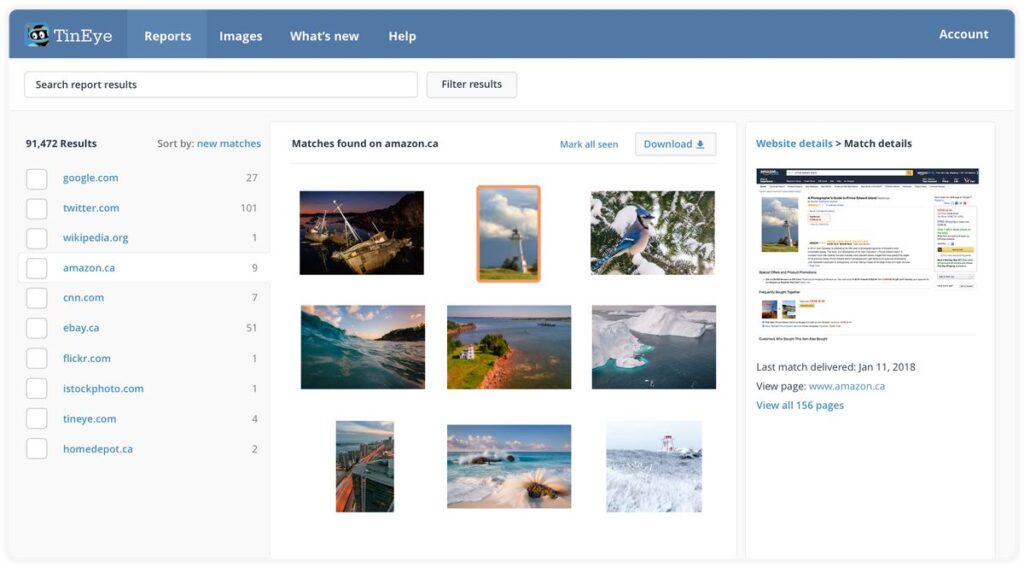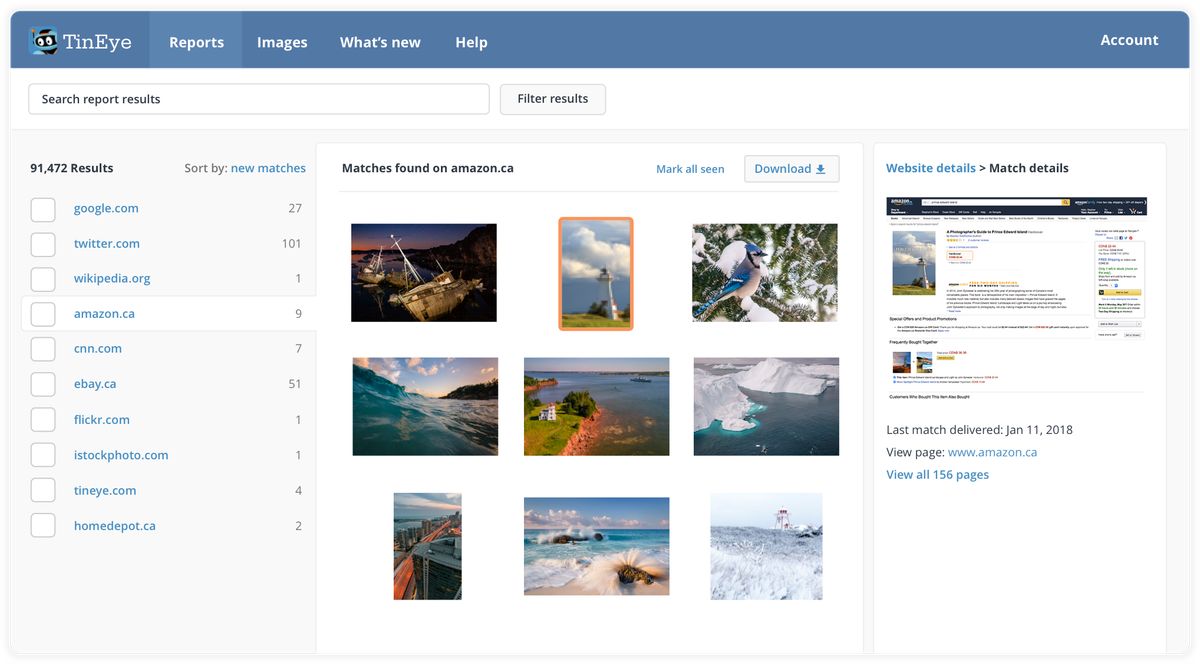
What is TinEye? A Comprehensive Guide to Reverse Image Search
In the vast digital landscape, images reign supreme. From social media profiles to online marketplaces, visuals play a crucial role in how we communicate and interact. But what happens when you need to know more about an image? That’s where TinEye comes in. This article delves into the world of TinEye, exploring its functionalities, applications, and why it’s a valuable tool for anyone navigating the internet.
Understanding Reverse Image Search
Before diving into the specifics of TinEye, it’s essential to understand the concept of reverse image search. Unlike traditional search engines where you type in keywords to find images, reverse image search allows you to use an image as the query. You upload an image or provide its URL, and the search engine finds websites where that image or similar images appear.
This technology is based on sophisticated algorithms that analyze the visual content of an image, creating a unique digital fingerprint. This fingerprint is then compared against a vast database of indexed images. When a match is found, the search engine provides links to the websites where the image is located.
What Makes TinEye Unique?
TinEye stands out from other reverse image search engines due to its unique approach. Unlike Google Images or other services that primarily rely on metadata and keywords associated with an image, TinEye focuses solely on image recognition. This means it identifies images based on their visual content, regardless of the surrounding text or tags.
This difference makes TinEye particularly useful in situations where metadata is unreliable or missing. For example, if an image has been reposted multiple times with different captions or no captions at all, TinEye can still identify its original source.
Key Features of TinEye:
- Pure Image Recognition: TinEye‘s core strength lies in its ability to identify images based on their visual content, ignoring surrounding metadata.
- Comprehensive Index: TinEye boasts a massive index of billions of images, increasing the likelihood of finding a match.
- Image Modification Detection: TinEye can often identify images that have been altered, cropped, or otherwise modified.
- Trace Image Origins: Discover where an image originated and how it has spread across the web.
- API Availability: For developers, TinEye offers an API that allows integration of its reverse image search technology into other applications.
How to Use TinEye
Using TinEye is straightforward. Here’s a step-by-step guide:
- Visit the TinEye Website: Go to tineye.com.
- Upload an Image or Provide a URL: You can either upload an image from your computer or paste the URL of an image found online.
- Initiate the Search: Click the search button.
- Review the Results: TinEye will display a list of websites where the image or similar images appear.
TinEye also offers browser extensions for Chrome, Firefox, and other popular browsers, making it even easier to perform reverse image searches directly from any webpage. Simply right-click on an image and select “Search image on TinEye.”
Applications of TinEye
TinEye has a wide range of applications across various industries and fields. Here are some notable examples:
Copyright Enforcement
Photographers, artists, and other content creators can use TinEye to monitor the use of their images online and identify potential copyright infringements. By uploading their original works, they can quickly find websites that are using their images without permission.
Fact-Checking and Verification
In an age of misinformation, TinEye can be a valuable tool for fact-checking and verifying the authenticity of images. By performing a reverse image search, you can determine whether an image has been altered or misrepresented.
Identifying Products and Objects
TinEye can help identify products or objects in an image. This can be useful for finding where to purchase a specific item or learning more about an object of interest. Imagine seeing a unique piece of furniture in a photo and using TinEye to find out where to buy it.
Source Attribution
Journalists, researchers, and bloggers can use TinEye to trace the origins of images and ensure proper attribution. This helps maintain ethical standards and avoid plagiarism.
Investigating Online Scams
TinEye can assist in identifying online scams by revealing the true origins of profile pictures or product images used in fraudulent schemes. This can help protect individuals from becoming victims of online fraud.
TinEye vs. Other Reverse Image Search Engines
While TinEye is a powerful tool, it’s essential to understand its strengths and weaknesses compared to other reverse image search engines like Google Images, Bing Visual Search, and Yandex Images.
As mentioned earlier, TinEye‘s primary focus on image recognition sets it apart. Google Images, for example, relies heavily on metadata and surrounding text, which can be less reliable. However, Google Images often indexes a larger number of images, potentially yielding more results in some cases.
Ultimately, the best reverse image search engine for a particular task depends on the specific requirements. It’s often beneficial to try multiple search engines to get a comprehensive view.
Limitations of TinEye
Despite its strengths, TinEye has certain limitations:
- Incomplete Index: While TinEye has a vast index, it doesn’t include every image on the internet. Therefore, it may not find matches for obscure or recently uploaded images.
- Sensitivity to Modifications: While TinEye can often detect modified images, significant alterations may prevent it from identifying a match.
- Focus on Exact Matches: TinEye primarily focuses on finding exact or near-exact matches. It may not be as effective at finding visually similar images that are significantly different.
The Future of Reverse Image Search
Reverse image search technology is constantly evolving, driven by advancements in artificial intelligence and machine learning. As algorithms become more sophisticated, we can expect even more accurate and comprehensive results.
Future developments may include improved image modification detection, better handling of visually similar images, and integration with other AI-powered tools for image analysis and understanding. TinEye continues to be a leader in this field, constantly innovating and refining its technology.
Conclusion
TinEye is a valuable tool for anyone who needs to know more about an image. Whether you’re a photographer protecting your copyright, a journalist verifying information, or simply curious about the origins of a picture, TinEye can provide valuable insights. Its focus on pure image recognition, combined with its comprehensive index, makes it a powerful resource for navigating the visual web. Understanding what TinEye is and how to use it can significantly enhance your ability to find information and verify authenticity in the digital age. So next time you encounter an image you want to learn more about, remember TinEye and unlock its potential.
From copyright protection to fact-checking, the applications of TinEye are vast and varied. As the internet becomes increasingly visual, tools like TinEye will only become more essential for navigating the digital landscape. Embrace the power of reverse image search and discover the hidden stories behind the images you encounter every day. Explore what TinEye can do for you!
[See also: How to Protect Your Images Online]
[See also: The Best Reverse Image Search Engines]
[See also: Using AI for Fact-Checking]

